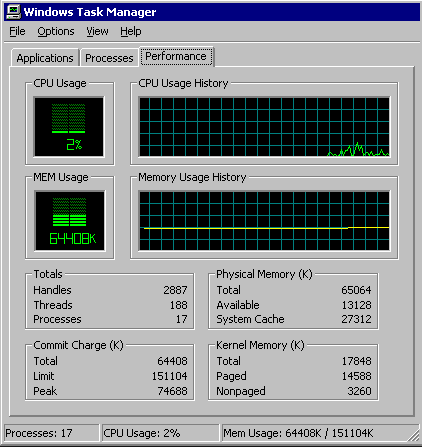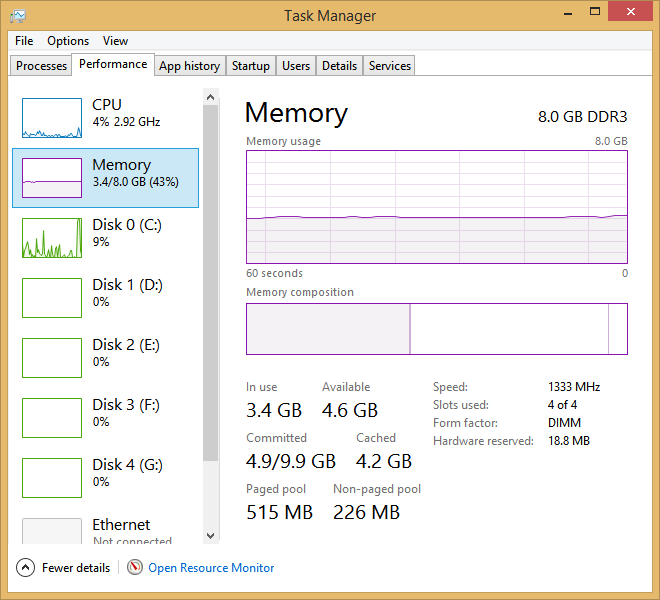-
-
products
-
resources
-
support
-
company
-
Free Memory and Available Memory in your Windows PC
By Steve Horton October 21, 2013memory, ram, windows 8, Windows XP7 CommentsComputer memory, more commonly referred to as RAM (Random Access Memory), is the part of your machine that stores the files and programs that are currently being or have recently been used by your PC. When your PC needs to run a program, it loads it from your hard drive and stores it temporarily in your RAM. Here it will remain until your computer is finished with running the program, or the the PC is shut down. Everything stored in RAM is lost when your PC turns off.

Memory Usage in Windows XPIn simpler terms, RAM is the workspace your PC uses to store and run active programs and files. The larger your workspace, the more programs it can handle and the faster your PC will run them. However, this can become a bit confusing for users of Windows XP and onward. For these users, Windows will display four categories of RAM under your memory usage statistics: Free, Available, Cached, and Total.
Total memory is self-explanatory. This is the total amount of physical memory that Windows has access to. Cached memory is the portion of your RAM that has been used by the system recently. The two that you need to be concerned about are the two which are the most confusing, available and free memory. To an everyday user, these categories seem identical, however they measure two different types of memory.

Memory Usage in Windows 8What is Free Memory?
While free memory and available memory both have similar sounding names, free memory is exactly what it says it is. This is memory that is currently unused by the system and contains no useful data at all. It is free to be used by the system at any time. Simple as that.
What is Available Memory?
Here’s where things get a little bit tricky. Available memory contains all the memory that is available for use by the system. While this sounds extremely similar to free memory, it is actually a broader category that includes both free memory and cached memory. That is why your level of free and available memory will differ, regardless of their similar names and functions.
Available memory plays an important role in later versions of windows. Starting with Windows 7, Windows begins to pre-load files into available memory that it might need in the future. The idea is that if some of these files are already sitting in RAM, you will experience a noticeable increase in the speed of your machine. If this memory is going to be idle anyway, why not use it? If these files are not needed, they are easily swapped out of RAM in order to make room for something else.
Was this post helpful?YesNoFree Driver Updates
Update your drivers in less than 2 minutes to enjoy better PC performance - Free.
Free Driver Updates
Update your drivers in less than 2 minutes to enjoy better
PC performance - Free.
Didn't find your answer?Ask a question to our community of experts from around the world and receive an answer in no time at all.most relevant recent articles Pin It on Pinterest